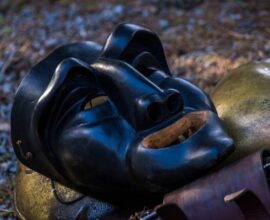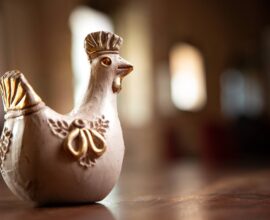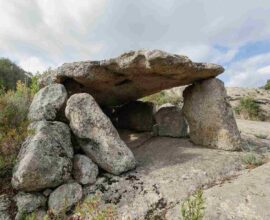Mamuthones and Issohadores: the mysteries behind the masked characters of the Mamoiada’s carnival
Mamuthones and Issohadores, archaic symbols of the Mamoiada village
Mamuthones and Issohadores, the centuries-old masked characters of a unique Carnival.
Among the uses and popular customs of the most authentic Sardinia, Mamuthones and Issohadores stand out as symbols of a Sardinian tradition that could date back to the Nuragic era. These are the two millennial masked characters of Mamoiada’s Carnival, located in the heart of the Barbagia area.
This ancient rite is handed down from generation to generation and it is full of mystery and charm that has been able to ride the waves of time and arrive, intact, to the present day. The Mamoiada Carnival begins on January 17th, the day of Sant’Antonio Abate’s Festival, with the first outing of the masked characters after the arrival of the new year (the subsequent outings take place on Carnival Sunday and Shrove Tuesday).
The two male figures appear different and in “contrast” but, in reality, they are inseparable and complementary, the image of a single group that represents a priceless heritage for the local community.
The heartfelt and profound ritual begins with the dressing, a solemn moment in which men “transform” and take on the appearance of Mamuthones and Issohadores. This is done through various phases that are performed with great care and attention, in an atmosphere of mystery and suggestion that culminates with the lowering of the mask on the face, when the members of the group lose their identity and speech to become “supernatural” beings beyond the barriers of time.
The Mamuthones, anthropomorphic figures, wear on their face the “visera“, a black wooden mask, “su belludu“, brown or black velvet clothing, “sas peddes“, or “mastruca“, black sheepskins that cover the torso, the cap “bonette“, “su muncadore“, a Tibet wool shawl (used by local women) tied around the face to cover the head, “ sos ‘usinzos“, leather boots, and “sa carriga“, the cowbells held together by leather straps and placed on the back, weighing 20/25 kilos.
The Issohadores, characterised by lively movements, wear instead a white wooden mask, “sa visera ‘e santu“, “sa berritta“, a traditional black cloth headdress, a red cloth jacket, “su curittu“, and a white shirt without a collar, “sa ‘amisa“, white trousers, a shawl embroidered or painted with bright threads bent in a triangle and tied at the waist and “sas carzas ” that cover the shoes up to below the knee.
They then bring “sos sonajolos“, a leather belt on the shoulder with bells or small rattles, and “sa soha“, a rush rope woven by local artisans, with which they “catch” the audience during the performance.
The group is usually composed of twelve to sixteen Mamuthones who move in two parallel rows, joined by eight or ten Issohadores who flank them during the parade.
That of the Mamuthones is a “danced procession”: they move with heavy steps and produce, at regular intervals, a singular noise giving, in unison, a blow of the right shoulder while advancing with the left foot and, immediately after, a blow of the left shoulder proceeding with the right foot.
From time to time, always at regular intervals, they perform three quick jumps all together.
In contrast, the Issohadores move with quick and loose steps, and sudden elegant leaps while throwing “sa soha“, capturing friends or women in the audience.
They interact with the spectators and the surrounding world, while the Mamuthones are bound to mutism.
There are various hypotheses advanced over the years regarding these ancestral figures but, so far, none of them has been considered valid in the absence of proven documentation.
What is certain, however, is the deep meaning that recalls the cycle of nature.
Sant’Antoni de su O’U, Sant’Antonio Abate’s Festival
The first public appearance of the singular masked characters of the Mamoiada Carnival takes place on January 17th, the day of Sant’Antonio Abate’s, co-patron of Mamoiada.
“Sant’Antoni de su O’U”, Sant’Antonio del Fuoco, is a ritual between the sacred and the profane, during which numerous bonfires are lit around the village in honour of the Saint who, according to tradition, stole fire from hell to gift it to mankind.
The start of the lighting is held on the evening of January 16th when “Su pesperu“, the priest, leads the faithful in procession making three laps around the fire and reciting the Creed.
At the end, he blesses the embers and the statue of Sant’Antonio Abate.
During the festival, banquets are held around the fires and authentic delicacies and “culinary works of art” are prepared: “Su popassinu nigheddu“, “Sas caschettas“, “su popassinu biancu” and “su coccone ‘in mele” just to name a few.
Would you like to attend the evocative ritual of the Sardinian Carnival and experience a fabulous holiday in an authentic paradise? Discover Forte Village Resort in Sardinia






